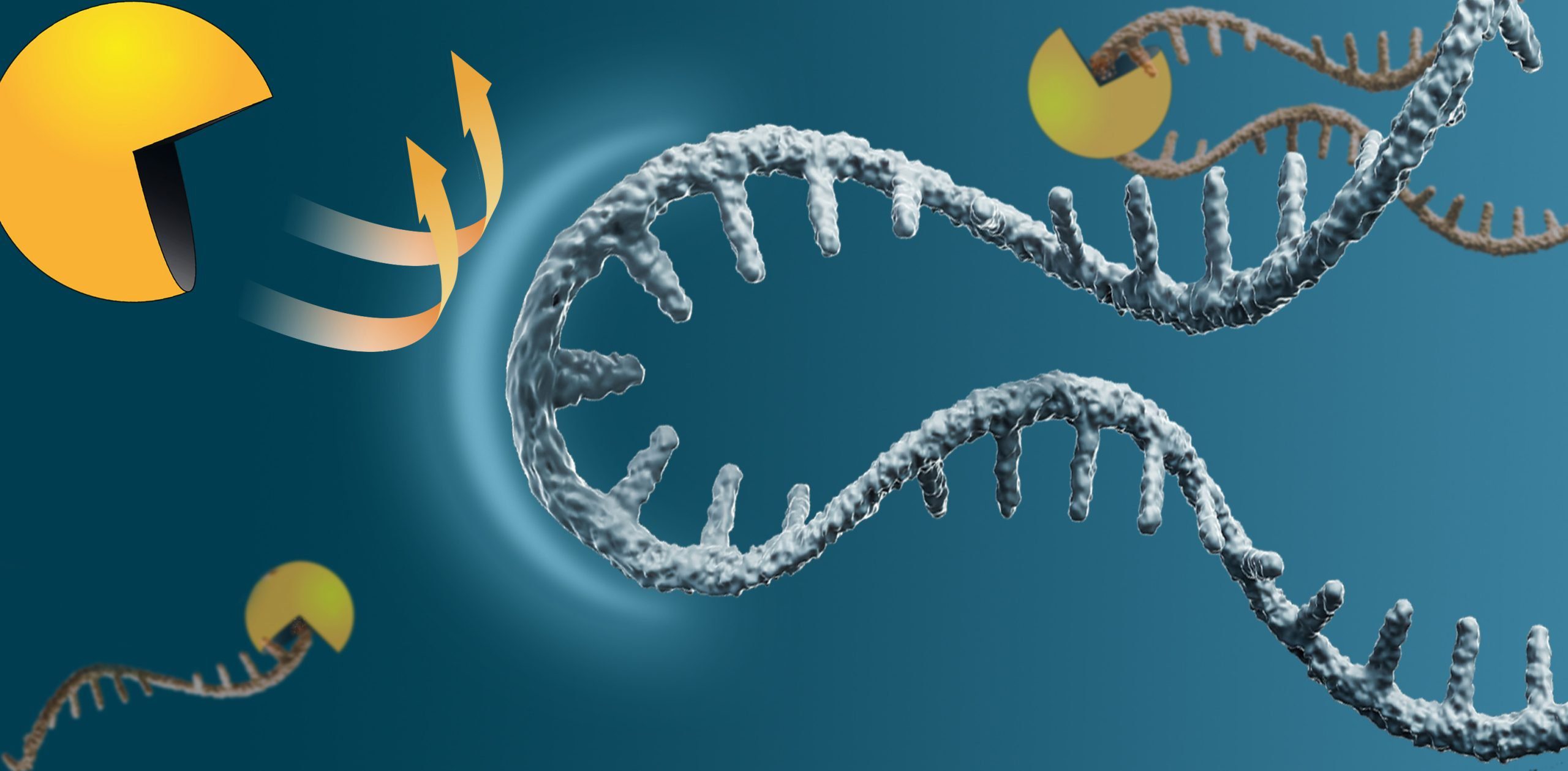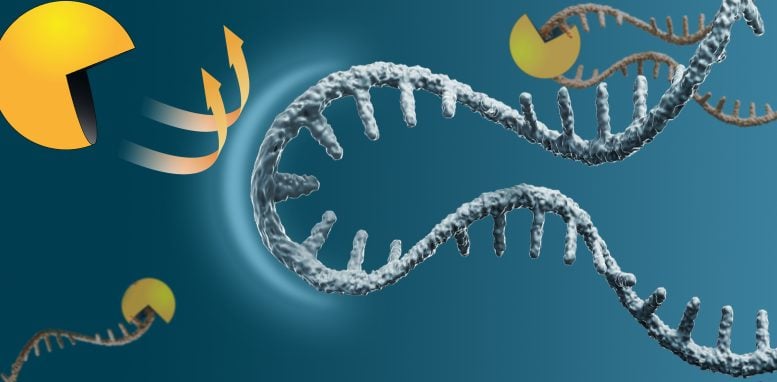

The discovery of the first mRNA-stabilizing substance could pave the way for groundbreaking advancements in the development of innovative mRNA therapies.
mRNA carries the most valuable cellular information — the chemical blueprint for protein production—from the nucleus to the cytoplasm. Once it delivers its message to the protein-producing machinery in the cytoplasm, it is no longer required and is broken down by exonucleases.
Depending on how long the mRNA remains in the cytoplasm, more or less of a protein is produced – be it health-promoting or disease-causing. The regulation of mRNA levels is one of the most promising strategies in the emerging field of RNA-based therapeutics.
How to protect the messenger
The team around Peter ‘t Hart has now developed a new strategy to extend the lifespan of mRNA by protecting it from its dismantling. Interestingly, mRNA is not particularly stable by nature and would be degraded prematurely without molecular caps protecting the two mRNA ends.
At its so-called 3’ end mRNA is equipped with a polyadenine tail with an average length of 200 nucleotides. But even this shield does not last long – the average half-life of mRNA is only 7 hours. In a process called deadenylation, the target mRNA is recruited by RNA-binding proteins to the protein complex CCR4-NOT, which removes one adenine after the other.

And this is precisely where the scientists’ new strategy comes in. Based on the structure of the mRNA-binding protein, they have developed a large peptide, that can block the interaction of the CCR4-NOT complex with the target mRNA. Large peptides, however, have problems overcoming (crossing) cellular barriers, what they have to do if they are to be used as drugs.
By revealing the 3D-structure of the peptide-inhibitor bound to the target the chemists were able to make modifications, that improved the cell permeability of the peptide.
Increasing the stability of potentially health-promoting proteins
The scientists were able to take their work even one step further and demonstrate the potential of their strategy in cellular assays. Treating cells with the peptide stabilized the polyadenine tails of two potential health-promoting proteins: a tumor suppressor, which could have beneficial effects in cancer, and a nuclear receptor, whose increasing levels could help to treat various aging-related diseases.
“The concept of stabilizing beneficial mRNAs by blocking their deadenylation has not yet been explored. Since almost all mRNAs undergo this process, blocking them can be used to develop new drugs that offer a new way to treat diseases where other strategies have failed,” says ‘t Hart. His group is currently working on the development of further inhibitors against other components of the deadenylation machinery.
Reference: “Stapled Peptides as Inhibitors of mRNA Deadenylation” by Sunit Pal, Ilja Gordijenko, Stefan Schmeing, Somarghya Biswas, Yasemin Akbulut, Raphael Gasper and Peter ‘t Hart, 25 September 2024, Angewandte Chemie International Edition.
DOI: 10.1002/anie.202413911